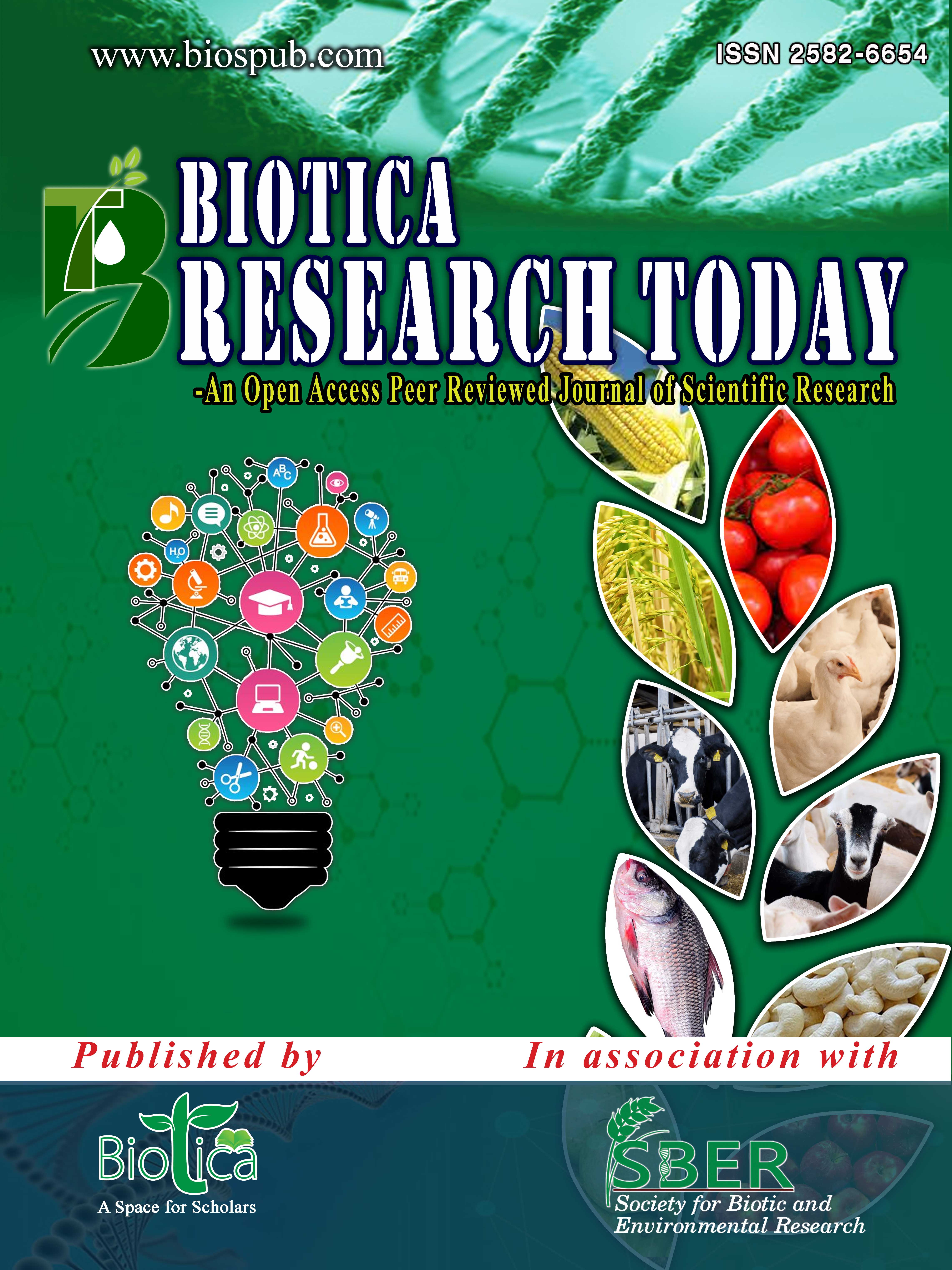Study on Diversity of Fungus Associated with Nephila pilipes
DOI:
https://doi.org/10.54083/PHA/1.2.2023/14-17Keywords:
Biodiversity, Conidia, Conidiophore, Fungi, Hyphae, Nephila pilipesAbstract
The fungus has various type of association with spider. They can be pathogenic or symbiotic or commensal in relationship to spiders they live on. In the current study the diversity of fungi in association with Nephila pilipes spider were recorded. The fungi were isolated from its legs and saliva. The microscopic and macroscopic characters were obtained. The measurements of hyphae, conidia and conidiophore were recorded. The fungal growth was more on legs compared to saliva. The legs of the adult spider carried more fungi than saliva as they are associated with soil, carrying microflora on their legs. Further the four different fungus isolated as aspergillus, penicillium, Trichoderma and Cladosporium. The penicillium colony had abundant growth, aspergillus had moderate growth and Cladosporium had less growth compared to Trichoderma.
Downloads
References
Atlas, R.M., Parka, L.C., 1997. Handbook of Microbiological Media. 2nd Edition. CRC Press, Boca Raton. p. 1706.
Benson, H.J., 2005. Benson’s Microbiological Applications: Laboratory Manual in General Microbiology. 9th Edition. McGraw-Hill Higher Education, Boston. p. 525.
Cappuccino, J.G., Welsh, C., 2017. Microbiology: A Laboratory Manual. Global Edition, 11th Edition. Pearson Education. p. 560.
Carris, L.M., Little, C.R., Stiles, C.M., 2012. Introduction to Fungi. In: The Plant Health Instructor. American Phytopathological Society, St. Paul, USA. DOI: 10.1094/PHI-I-2012-0426-01.
Cooke, W.M.B., 1954. The use of antibiotics in media for the isolation of fungi from polluted water. Antibiotics and Chemotherapy 4(6), 657-662.
Dugan, F.M., 2017. Hosts, substrata and environments. In: The Identification of Fungi: An Illustrated Introduction with Keys, Glossary and Guide to Literature. American Phytopathological Society, St. Paul, USA. pp. 120-122. DOI: 10.1094/9780890545041.008. DOI: https://doi.org/10.1094/9780890545041.008
Ezz, N.A., 2012. Entomopathogenic fungi associated with certain scale insects (Hemiptera: Coccoidea) in Egypt. Egyptian Academic Journal of Biological Sciences (A. Entomology) 5(3), 211-221. DOI: 10.21608/EAJBSA.2012.14287. DOI: https://doi.org/10.21608/eajbsa.2012.14287
Gaddeyya, G., Niharika, P.S., Bharathi, P., Kumar, P.K.R., 2012. Isolation and identification of soil mycoflora in different crop fields at Salur Mandal. Advances in Applied Science Research 3(4), 2020-2026.
Hauser, J.T., 2013. Techniques for Studying Bacteria and Fungi. Carolina Biological Supply Company, Burlington. p. 31.
Jalajakshi, S., Usha, R.N., 2019. Phylogenetic analysis of cox I gene in identification of spiders. Journal of Entomology and Zoology Studies 7(2), 895-897.
Jarvis, B., 1973. Comparison of an improved Rose Bengal-Chlortetracycline Agar with other media for the selective isolation and enumeration of moulds and yeasts in foods. Journal of Applied Bacteriology 36(4), 723-727. DOI: 10.1111/j.1365-2672.1973.tb04157.x. DOI: https://doi.org/10.1111/j.1365-2672.1973.tb04157.x
Knogge, W., 1996. Fungal infection of plants. The Plant Cell 8(10), 1711-1722. DOI: 10.1105/tpc.8.10.1711. DOI: https://doi.org/10.2307/3870224
Ottow, J.C., 1972. Rose Bengal as a selective aid in the isolation of fungi and actinomycetes from natural sources. Mycologia 64(2), 304-315. DOI: https://doi.org/10.1080/00275514.1972.12019265
Papavizas, G.C., Davey, C.B., 1959. Evaluation of various media and antimicrobial agents for isolation of soil fungi. Soil Science 88(2), 112-117. DOI: 10.1097/00010694-195988020-00010. DOI: https://doi.org/10.1097/00010694-195988020-00010
Smith, N.R., Dawson, V.T., 1944. The bacteriostatic action of Rose Bengal in media used for plate counts of soil fungi. Soil Science 58(6), 467-471. DOI: 10.1097/00010694-194412000-00006. DOI: https://doi.org/10.1097/00010694-194412000-00006
Sun, J.M., Irzykowski, W., Jedryczka, M., Han, F.X., 2015. Analysis of the genetic structure of Sclerotinia sclerotiorum (Lib.) de Bary populations from different regions and host plants by Random Amplified Polymorphic DNA markers. Journal of Integrative Plant Biology 47(4), 385-395. DOI: 10.1111/j.1744-7909.2005.00077.x. DOI: https://doi.org/10.1111/j.1744-7909.2005.00077.x
Waksman, S.A., 1922. A method for counting the number of fungi in the soil. Journal of Bacteriology 7(3), 339-341. DOI: 10.1128/jb.7.3.339-341.1922. DOI: https://doi.org/10.1128/jb.7.3.339-341.1922
Downloads
Published
How to Cite
Issue
Section
License
Copyright (c) 2023 Plant Health Archives

This work is licensed under a Creative Commons Attribution-NonCommercial-NoDerivatives 4.0 International License.
Submission of a manuscript implies that when the manuscript is accepted for publication, the authors agree to automatic transfer of the copyright to the publisher (or grant the Publisher exclusive publication and dissemination rights). The Biotica, as the publisher, has the right to enter into any agreement with any organization in India or abroad engaged in reprography, photocopying, storage and dissemination of information contained in this journal. The Biotica has no objection in using the material, provided the information is being utilized for academic purpose but not for commercial use. Due credit line should be given to Biotica where information will be utilized.









 |
|




